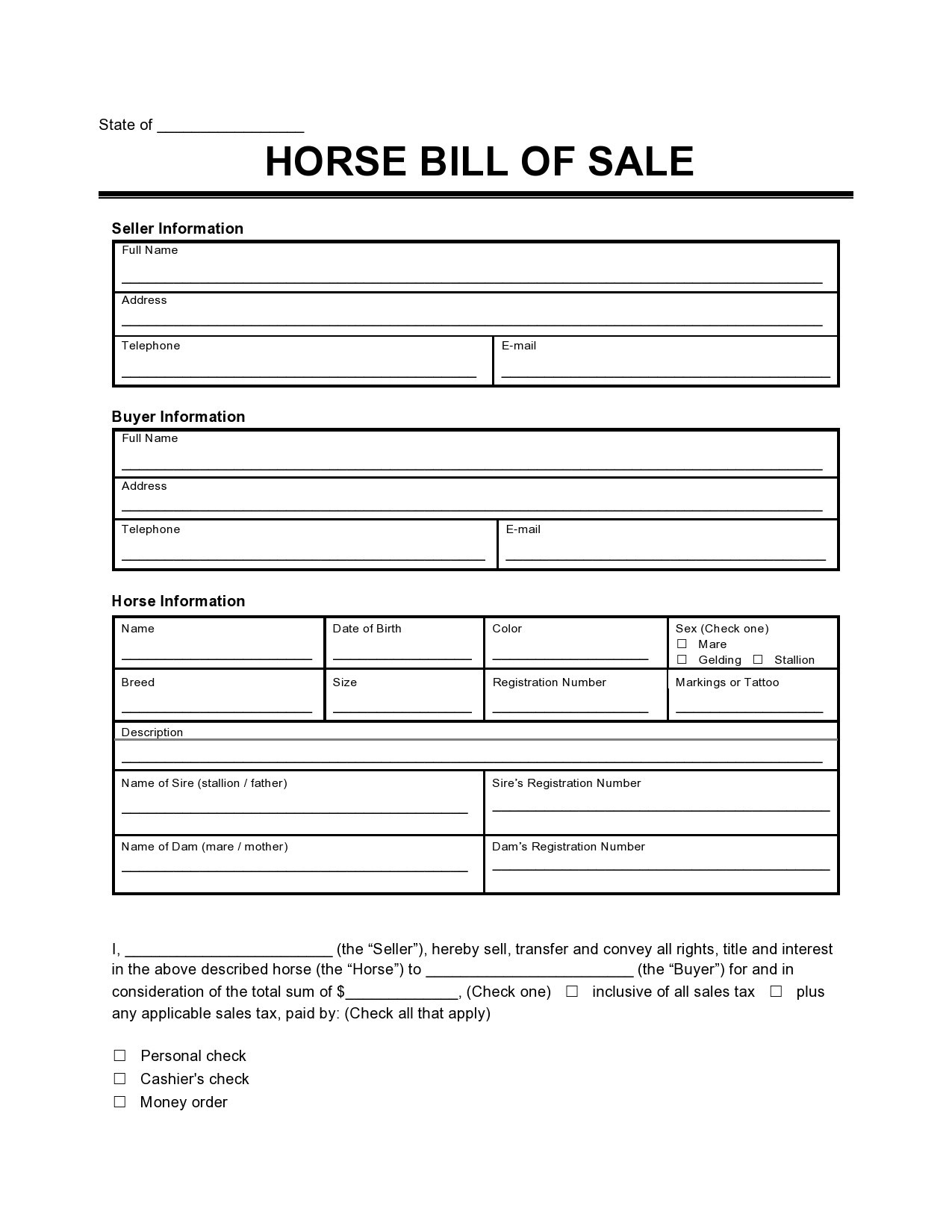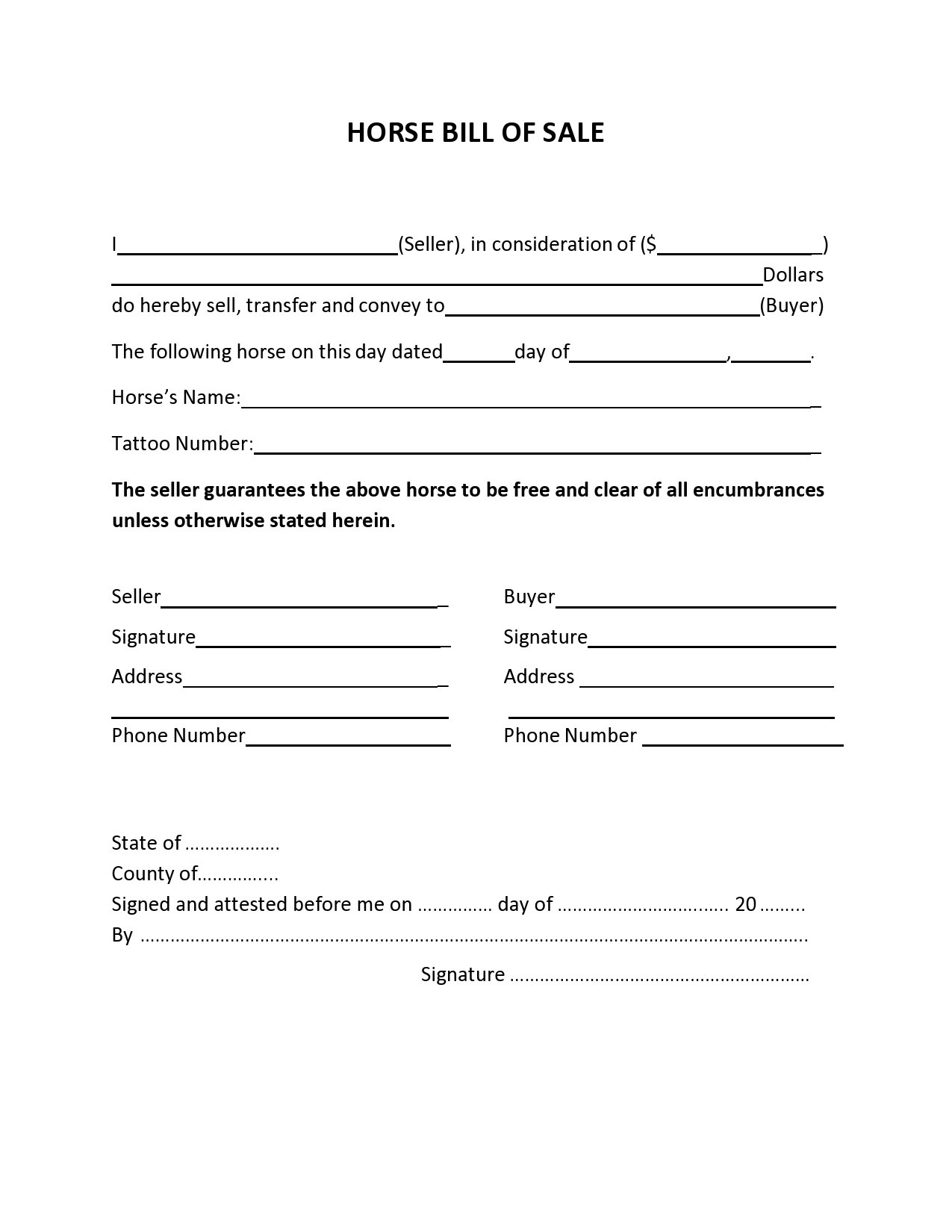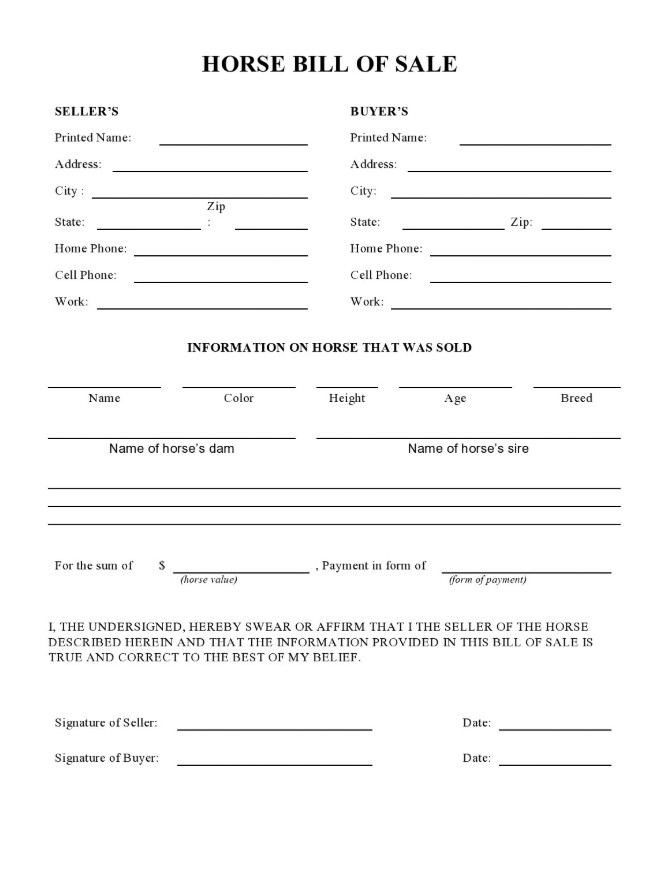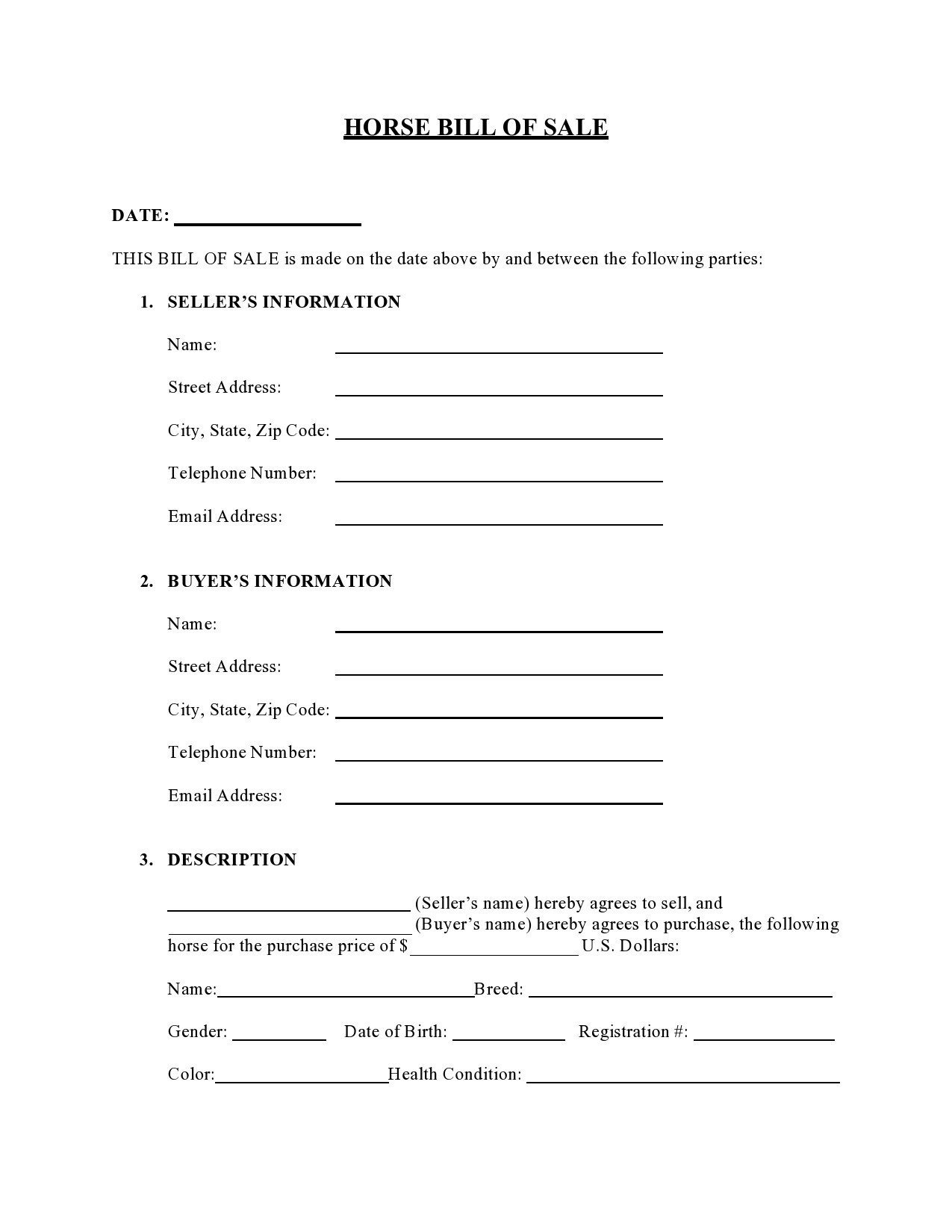When buying or selling a horse, it’s important to have all the necessary documentation in place to ensure a smooth and legal transaction. One such document is the horse bill of sale, which is a legally binding document that formally transfers ownership of a horse from the seller to the buyer.
This article will provide you with all the information you need to know about this important document, including why it is necessary, how to create one, and tips for successful horse transactions.

What is a Horse Bill of Sale?
A horse bill of sale is a document that serves as a written record of a horse sale transaction. It outlines the details of the sale, including the names and contact information of the buyer and seller, the purchase price, and any specific terms or conditions of the sale. This document is legally binding, meaning that both parties are obligated to fulfill their responsibilities as outlined in the bill of sale.
Having a horse bill of sale is essential for both the buyer and the seller. For the buyer, it provides proof of ownership and protects against any potential disputes or claims from the previous owner. For the seller, it offers protection against any liability or responsibility for the horse once it has been sold. In addition, a bill of sale can also be used as supporting documentation for registration purposes, insurance coverage, and tax purposes.
Why is a Horse Bill of Sale Necessary?
A horse bill of sale is necessary for several reasons:
- Legal Protection: A bill of sale provides legal protection for both the buyer and the seller. It clearly outlines the terms and conditions of the sale, ensuring that both parties are aware of their rights and responsibilities.
- Proof of Ownership: The bill of sale serves as proof of ownership for the buyer. It provides a written record of the transaction and can be used to resolve any disputes or claims regarding ownership.
- Registration and Insurance Purposes: Many breed associations and insurance companies require a bill of sale as supporting documentation for registration and insurance coverage. Without a bill of sale, it may be difficult to prove ownership or obtain proper coverage.
- Tax Purposes: A bill of sale can also be used for tax purposes, as it provides evidence of the purchase price and can be used to calculate any applicable taxes or deductions.
How to Create a Horse Bill of Sale
Creating a horse bill of sale is a relatively straightforward process. Here are the steps you need to follow:
- Gather Information: Collect all the necessary information for the bill of sale, including the names and contact information of the buyer and seller, the purchase price, and any specific terms or conditions of the sale.
- Use a Template: Use a horse bill of sale template as a starting point. You can find free templates online or create your own using a word processing software.
- Include Essential Details: Make sure to include all the essential details in the bill of sale, such as the horse’s name, breed, age, registration number (if applicable), and any warranties or guarantees.
- Specify Terms and Conditions: Clearly outline any specific terms or conditions of the sale, such as a trial period, return policy, or payment schedule.
- Review and Sign: Review the bill of sale carefully to ensure accuracy and completeness. Once both parties are satisfied, sign the document to make it legally binding.
Examples of Horse Bill of Sale Templates
Here are a few examples of horse bill of sale templates that you can use as a starting point:




Tips for Successful Horse Transactions
Here are some tips to ensure a successful horse transaction:
- Research: Do thorough research on the horse you are interested in buying, including its breed, age, health history, and training. This will help you make an informed decision and avoid any surprises.
- Get a Pre-Purchase Exam: Consider getting a pre-purchase exam from a qualified veterinarian to assess the horse’s overall health and soundness. This can help identify any underlying issues that may affect its suitability for your intended use.
- Ask for Documentation: Request copies of the horse’s registration papers, vaccination records, and any other relevant documentation. This will help verify the horse’s identity and ensure that it has received proper care and vaccinations.
- Visit and Evaluate the Horse: Schedule a visit to see the horse in person and evaluate its temperament, conformation, and movement. If possible, try the horse out under saddle to assess its rideability and suitability for your needs.
- Get Everything in Writing: Ensure that all agreements, promises, and conditions are documented in the bill of sale. This will protect both parties and provide clarity on expectations.
- Consider a Trial Period: If possible, negotiate a trial period to allow you to assess the horse’s compatibility with your needs and riding abilities. This can help minimize the risk of a mismatched partnership.
Conclusion
A horse bill of sale is a crucial document for any horse transaction. It provides legal protection, proof of ownership, and supports registration, insurance, and tax purposes. By following the steps outlined in this article and using the provided templates, you can create a comprehensive and accurate bill of sale. Remember to do your due diligence when buying or selling a horse and consider seeking professional advice when needed. With the right preparation and documentation, you can ensure a successful and smooth horse transaction.
Horse Bill of Sale Template – Download
- Going-Away Party Invitation Template - January 10, 2026
- Free Printable Goal Tracker Template - January 10, 2026
- Printable Girlfriend Application Form Template - January 10, 2026